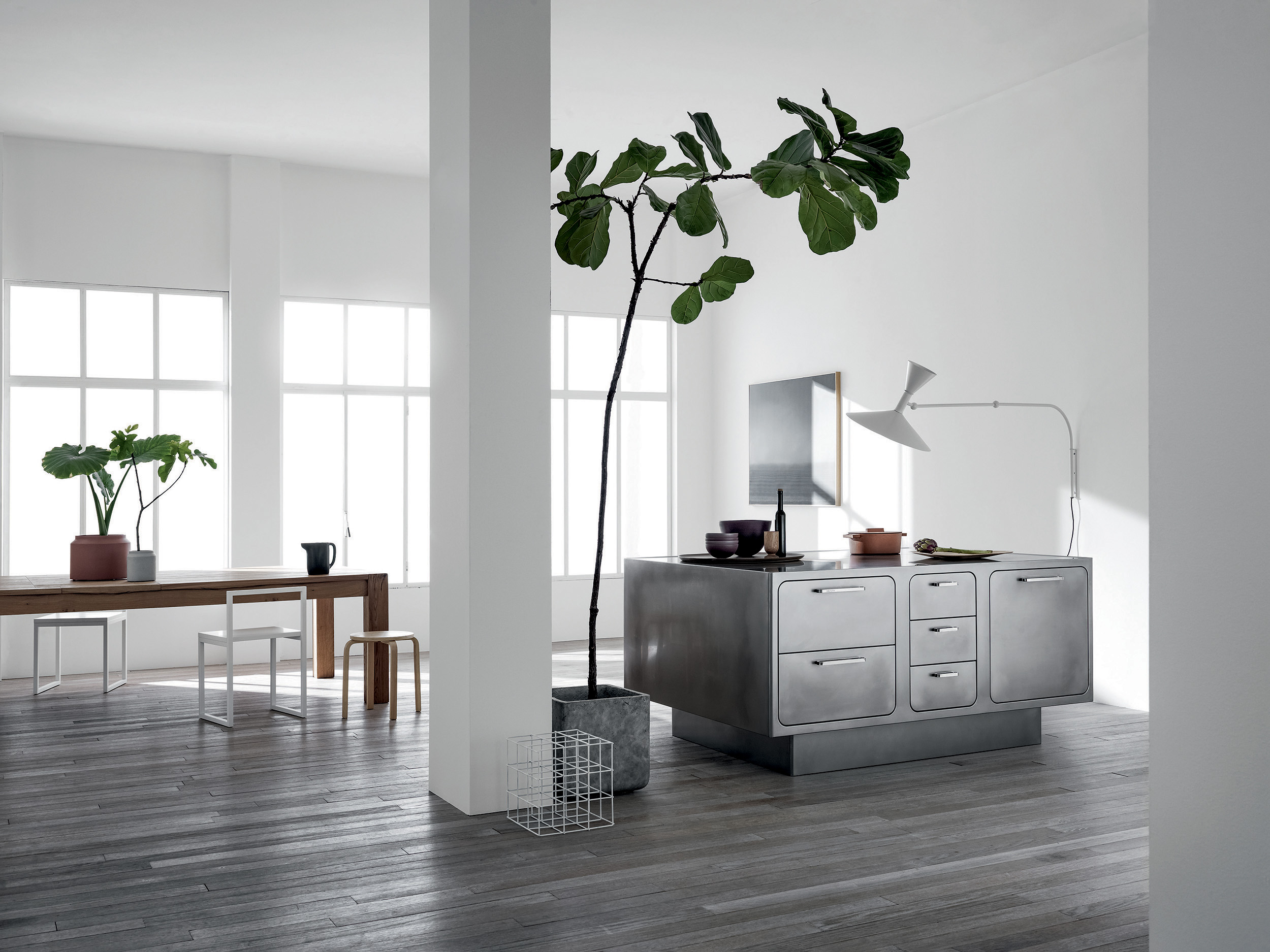
Abimis interviewed Alberto Torsello, founder of the studio TA Architettura in 2006, and to date one of the most famous Venetian architects in the field of restoration, care and enhancement of architectural and cultural heritage. But not only … with strong creativity and an eclectic spirit, Torsello has also designed a long list of architectural projects, urban regeneration, exhibition and residential spaces. As well as being an established product designer.
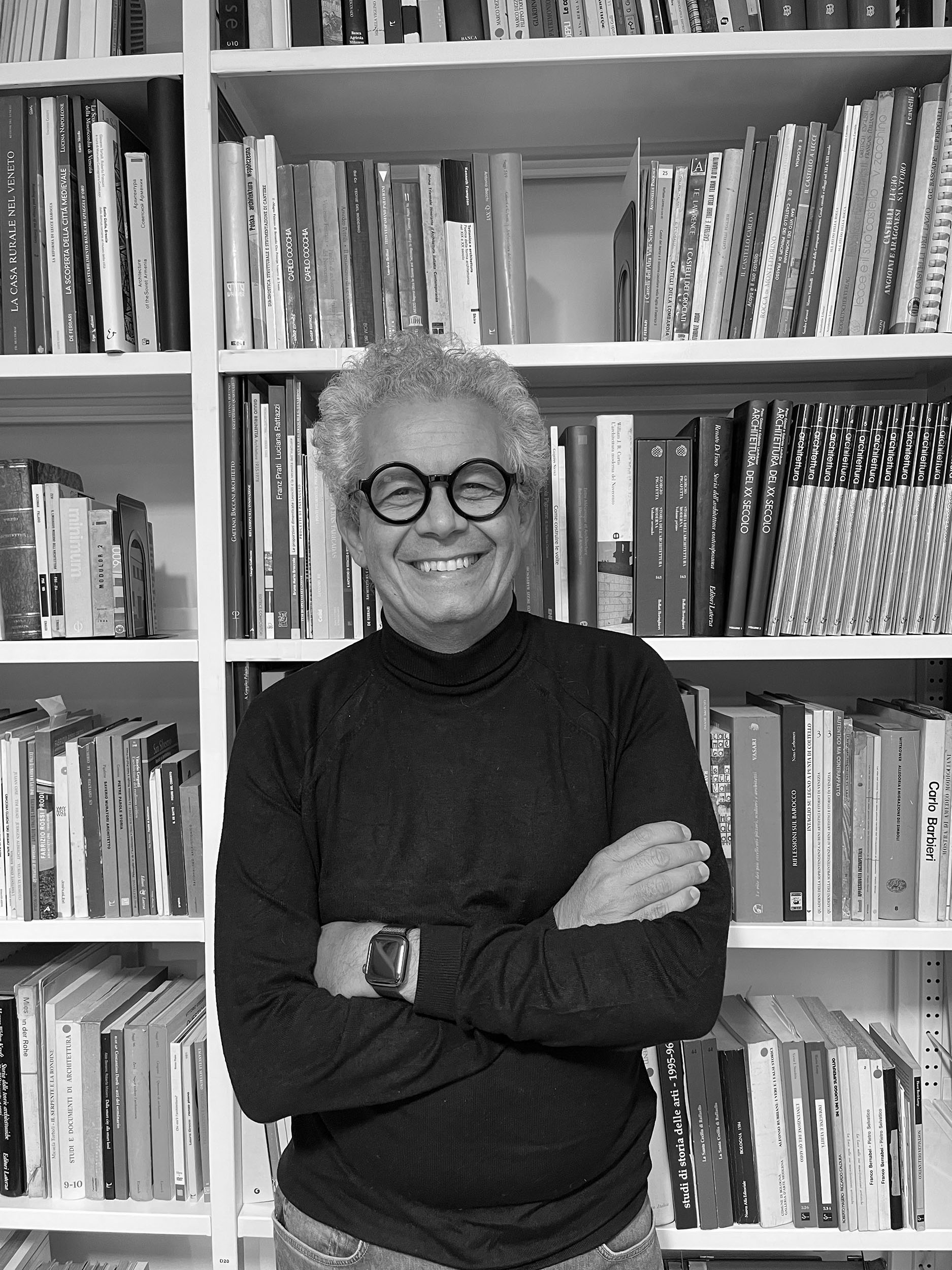
Thanks to his experience and the versatility of his studio TA, Torsello has collaborated with internationally renowned architects: Tobia Scarpa, Gae Aulenti, Guido Canali, Rem Koolhaas OMA, Paolo Portoghesi, Tadao Ando, Arata Isozaki and David Chipperfield, to name a few.
The architect Alberto Torsello has a “double bond” to the Abimis brand. Not only has he used Abimis stainless steel kitchens for his projects around the world, but he also designed the Ego kitchen for the Treviso-based company, arguably Abimis’ most iconic kitchen, with its strong, bold design and rounded 1960s-inspired lines. It is certainly “the kitchen that didn’t exist, the one from which everything began”. Ego by Abimis is in fact the first professional stainless steel kitchen.
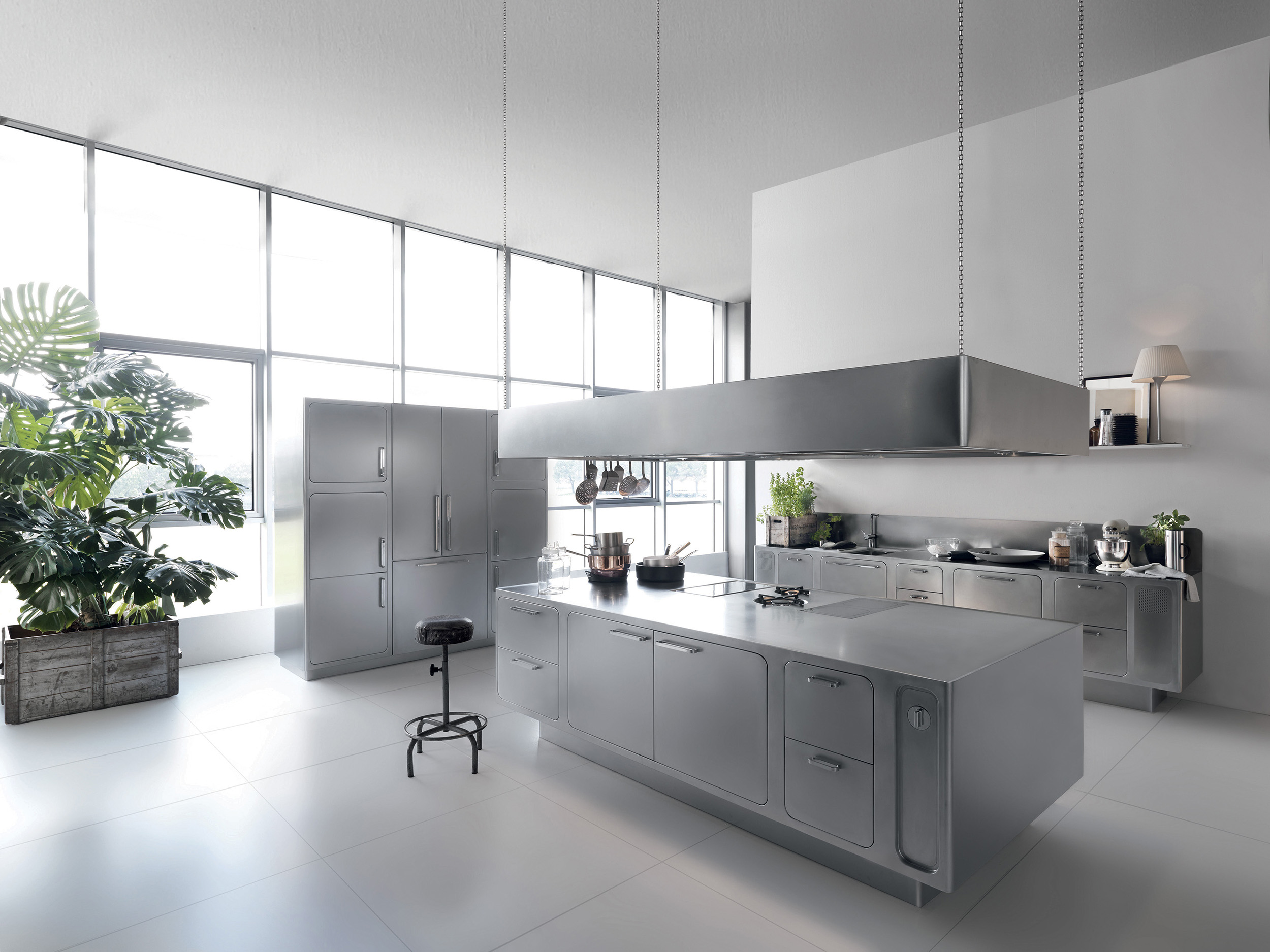
But here’s our interview with Alberto Torsello
How would you define your style?
I would say that my style is essential, rational, linked and always generated by architecture and its fundamental geometric rules, of restoration, matter and light.
Over the years you have created houses of different styles and types. But what’s the house where you live like?
The house where I live – and which I have just redesigned – represents my way of conceiving interior designs. It is based on the essential elements of architecture: the floor (horizontal plane) intended as a unitary surface, an element that generates space; the walls in the sense of wings that demarcate the space and that are interrupted by slits of light, the doors and windows; light, which generates and articulates the space, also through the installation of the furnishing volumes controlling it. And finally the furniture, understood as modular unitary elements that, together, give shape to the space, control it and animate it.

And, in particular, how did you design your kitchen?
The kitchen works on the theme of matter, recovering a typical material of kitchen environments – ceramic – that I interpreted through an innovative technological performance, highlighting a unitary and clean volume.
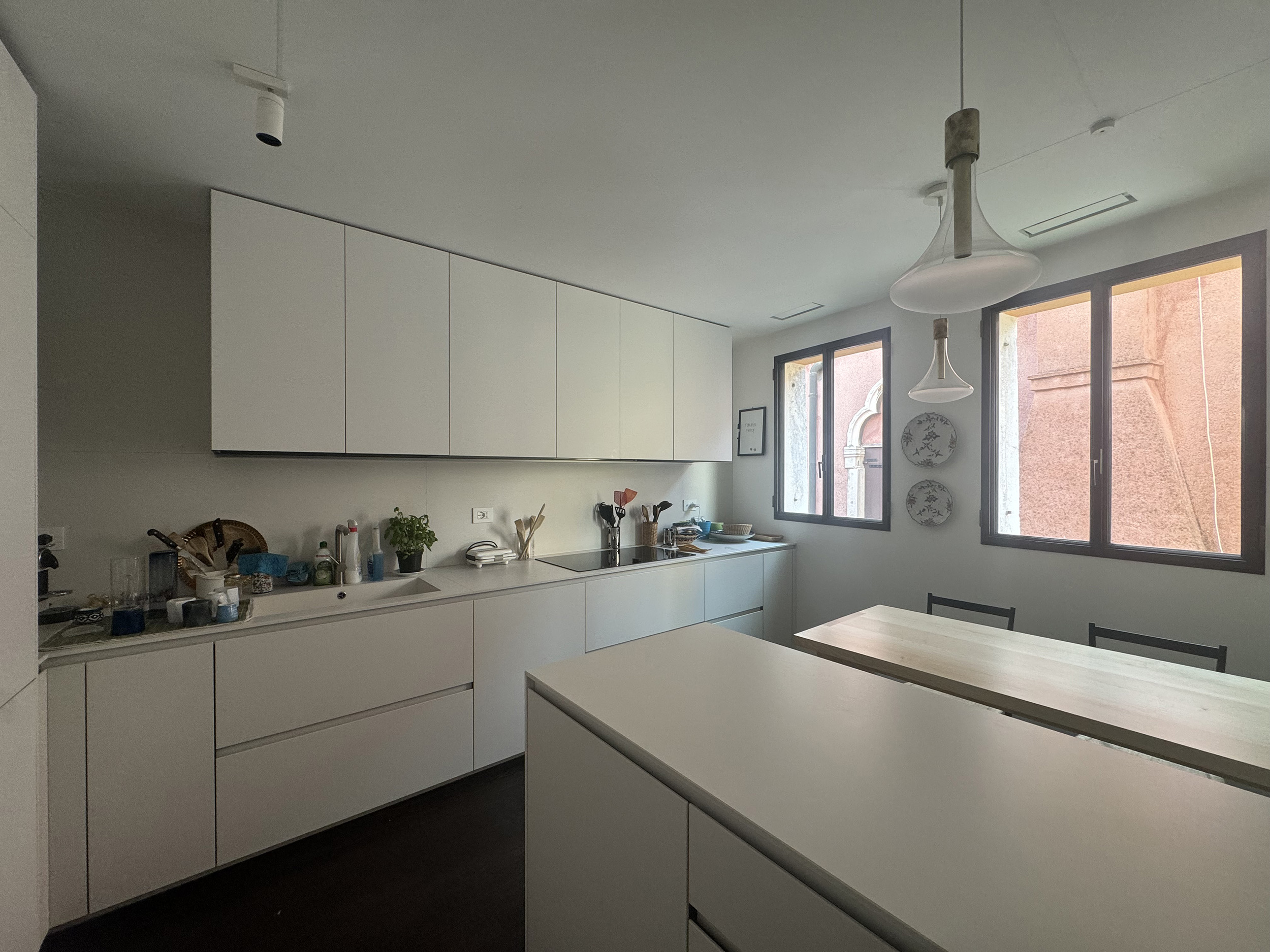
How do you always manage to interpret and translate specific customer requests into interior designs?
I usually start from the analysis and research of the meaning of the spaces, analysing them from the point of view of light which almost always becomes its main determining and characterising element, and thus associating materials and construction solutions that look at traditional techniques but open themselves up to technological innovation.
In your opinion, what is the importance of the kitchen within the domestic environment and which elements do you consider fundamental in designing a kitchen?
Historically, the kitchen has always been the true place of life inside the house. It is where we find the hearth, fire and light, which were not always available in other rooms of the house; it is the place for organising and planning domestic life, home to all activities related to family life: from supplies to storage, preparation for everyday life and special events, which become the setting for the unfolding of domestic life. Everything starts from the kitchen.

Can you tell us in more detail about the customer’s requirements and the solutions you found in your design of the house in Monte Carlo?
The house in Monte Carlo is a contemporary house that revolves around the customer’s passion for art. It develops through the dialogue between the external and internal landscape. The sea and its horizon. Travertine, stylobate that supports contemporary art. Windows with absolute transparency. Matte and mirrored elements that blend the two landscapes. Fanatical organisation of space and its functions.

But why did you think of designing a stainless steel kitchen here?
In this context, a stainless steel mirror-polished kitchen is installed as a core, a cleft where the light is captured but which, at the same time, contributes to having the best technical/technological comfort for the ritual of cooking.
The kitchen must fit ‘on an equal footing’ with respect to the art surrounding it, without thereby overpowering it.
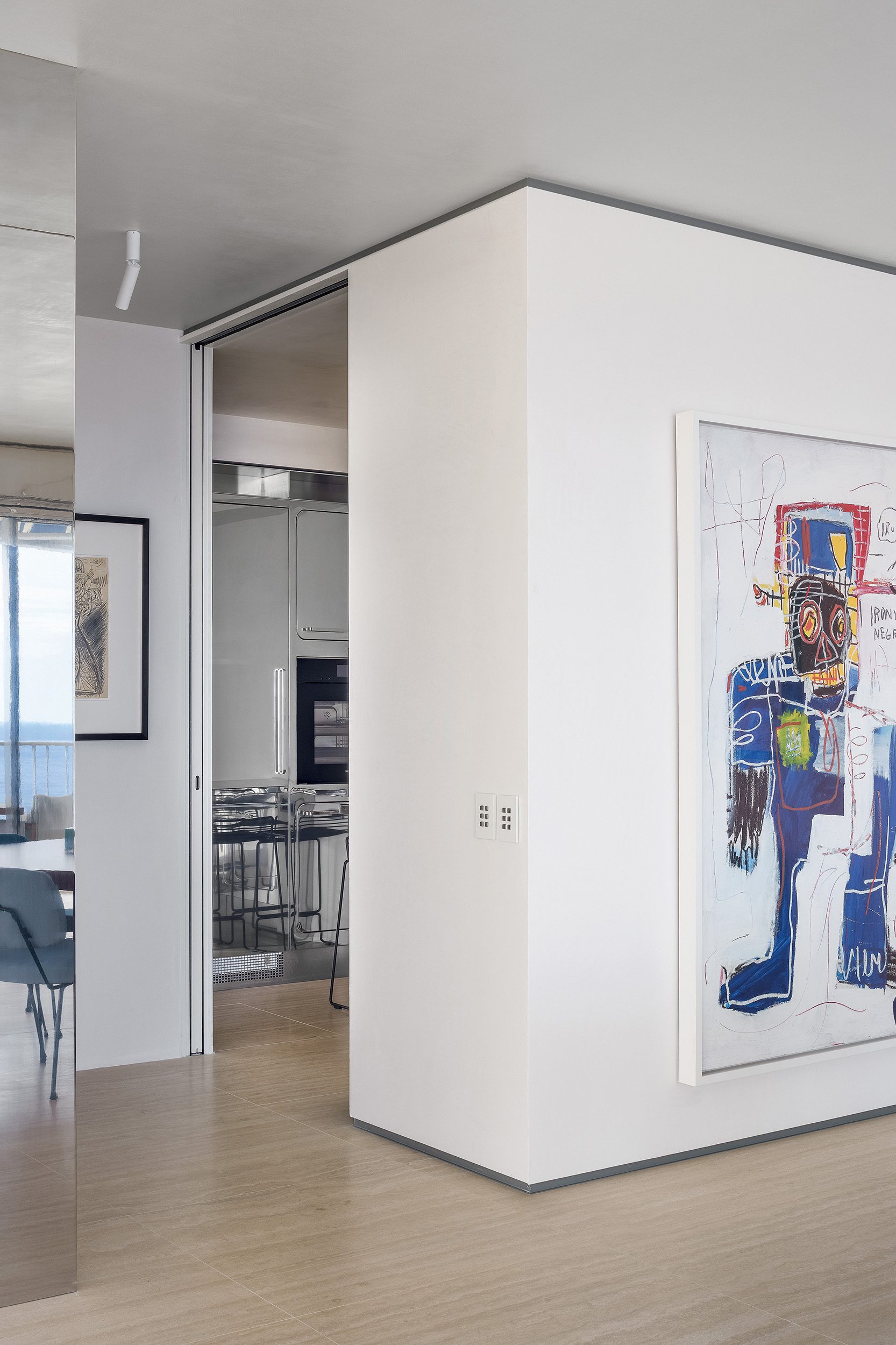
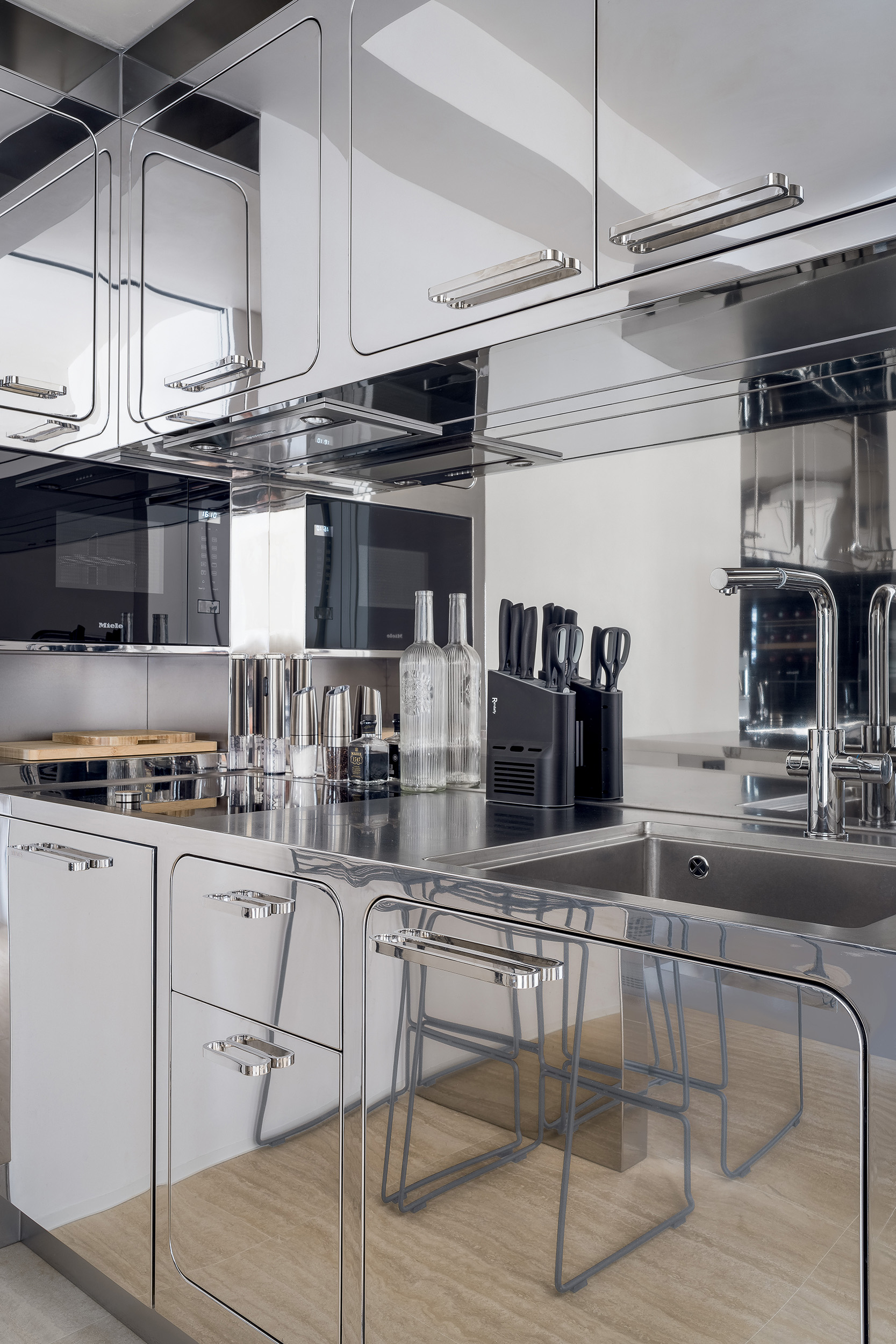
How did you get to know Abimis and what made you choose it as a partner for the kitchens in your designs?
Everything started in 2012/2013 following a professional collaboration with Prisma Italia (a brand of which Abimis is a member, specialising in the design and implementation of stainless steel solutions for the bar and professional catering sector),
accompanied by the advice of a chef, for designing a professional kitchen with the highest performance but also focusing attentively on the design point of view.
What are the distinctive strengths of Abimis, the ones you think are crucial for your interior design projects?
The rational concept behind the Abimis project, from the study of the relationships between the functions of cooking, to the choice of ensuring maximum hygiene without sharp corners and edges, to the ergonomic research underlying each individual size and position, and its essential look, sinuous and clean, without any visible elements (especially the exclusive patented all-concealed hinge), to the performance, characteristics and qualitative and aesthetic performance of steel.
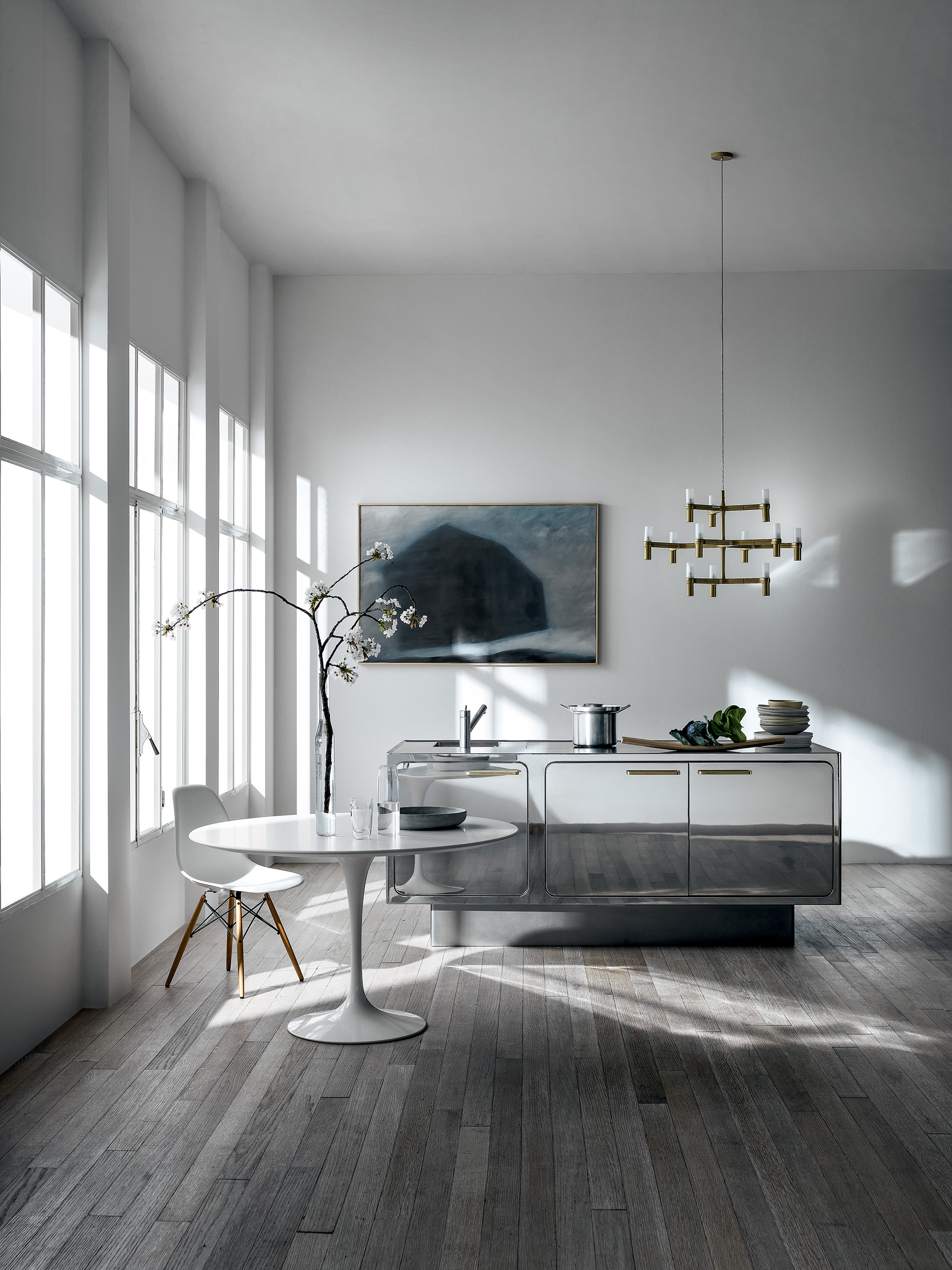
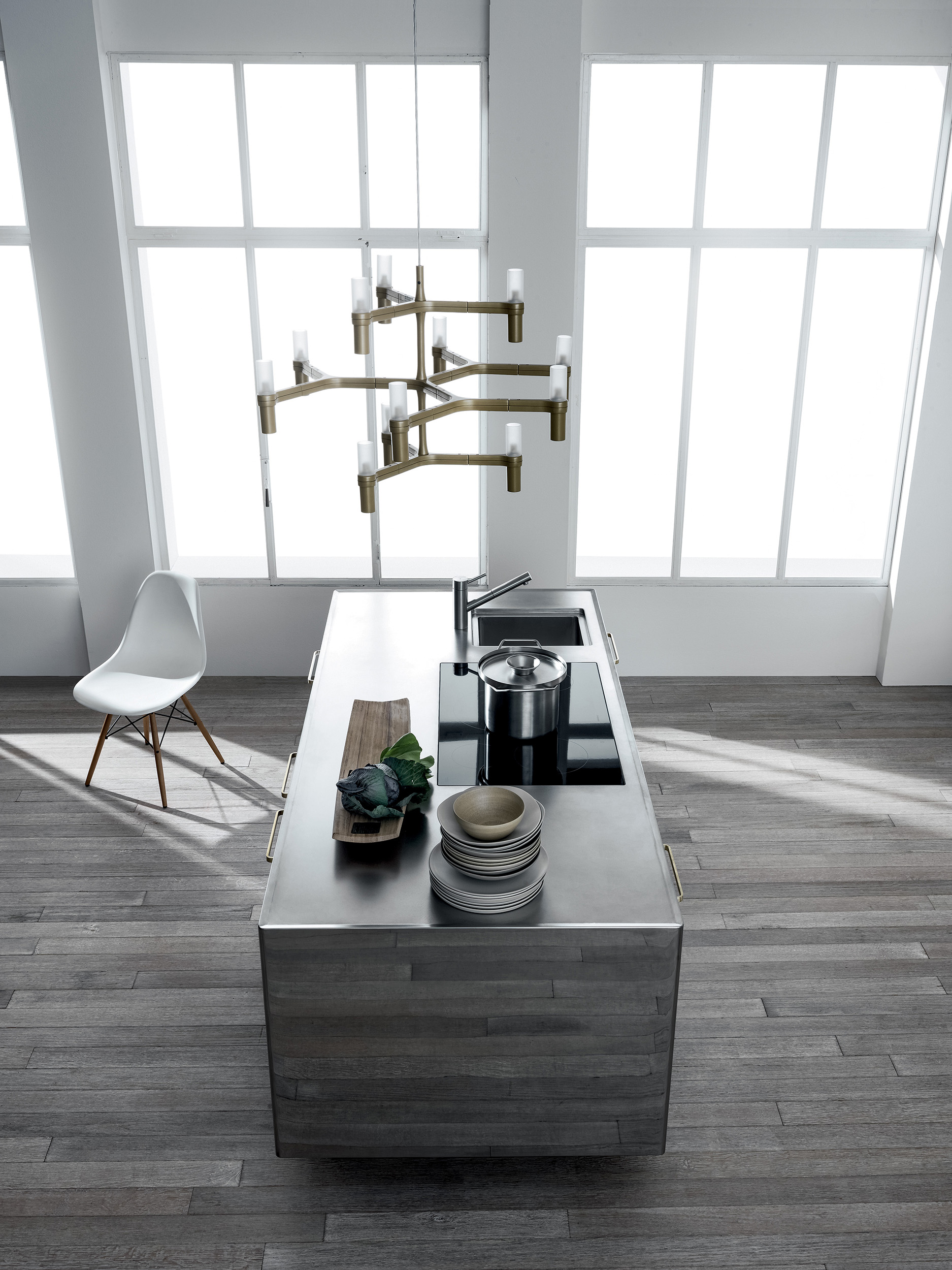
Finally, please define Abimis in 3 words…
Strong, sinuous, essential.

